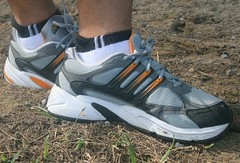FUNCTIONS OF THE LIVER
A. METABOLISM OF GLUCOSE
A. METABOLISM OF GLUCOSE
- Excess glucose is converted with the help of insulin into glycogen and stored in the liver cells and the muscle tissues.
- When there is a decrease in the blood sugar level, the glycogen is converted back to glucose with the help of a hormone, glucagon and released into the bloodstream.
- With the help of the hormones, insulin and glucagon, the liver actually helps to regulate the amount of glucose in the blood.
B. METABOLISM OF AMINO ACIDS
- Amino acids are transported to all parts of the body for the synthesis of proteins, enzymes, hormones and the replacement of damaged tissues.
- Since excess amino acids cannot be stored by the body, they are DEAMINATED into two parts: the amino part and the carbohydrate part. The carbohydrate part is converted into glycogen and stored in the liver cells and muscle tissues whereas the amino part is converted into urea and transported to the kidneys for excretion.
C. PRODUCTION OF BILE
- The liver produces bile which helps to emulsify fats globules into tiny fat droplets.
- Note: Emulsification occurs in the duodenum.
D. STORAGE OF IRON
- The iron from the breakdown of haemoglobin is stored in the liver.
- It is used for the synthesis of new haemoglobin molecules.
E. EXCRETION OF BILE PIGMENTS
- The breakdown of haemoglobin produces bile pigments (called bilirubin and biliverdin).
- Both pigments are excreted into the duodenum as bile pigments (The colour of the faeces is actually due to these bile pigments).
F. SYNTHESIS OF PLASMA PROTEINS
- Plasma proteins such a s fibrinogen, serum globulin and serum albumin are synthesized by the liver from amino acids.
- Fibrinogen together with other proteins plays a very important role in blood clotting.
G. DETOXIFICATION
- The liver removes 95% of the alcohol from the blood. The other 5% of the alcohol in the blood leaves the body in perspiration, in the urine and in the breath.
- The alcohol contains sugar and this sugar can be oxidised in the liver to release energy.
- Overconsumption of alcohol may lead to obesity since the surplus sugar in the alcoholic drinks cannot be oxidised. So, instead the surplus is converted into fats and stored in the body.
H. STORAGE OF VITAMINS
- Vitamins A and D are stored in the liver.
I. RESERVOIR FOR BLOOD
- The blood spaces and network of blood capillaries in the liver hold a large volume of blood.
J. SOURCE OF HEAT ENERGY
- The liver is metabolically active. Hence it produces a large amount of heat energy.
- The heat energy is distributed to all parts of the body by the bloodstream and helps in maintaining the body temperature.
